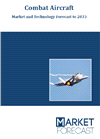Lockheed Martin and Korea Aerospace Industries (KAI) signed a Memorandum of Understanding (MoU) at the 2025 Paris Air Show, June 17, to expand their current collaboration on air systems to include rotorcraft manufacturing and next-generation platform development, space systems, crewed-uncrewed teaming, uncrewed aerial vehicles, training devices, and sustainment.
The MOU, signed by Lockheed Martin Chief Operating Officer Frank St. John and Korea Aerospace Industries President & CEO Goo-young Kang, builds on an enduring partnership spanning more than 30 years, beginning with F-16 licensed production and expanding to include the T-50 supersonic advanced jet trainer, FA-50 light attack aircraft, KF-21 multirole fighter and logistics support.
"The extension of our collaboration with KAI reflects our commitment to advancing global security by partnering with U.S. allies to develop, manufacture and sustain 21st century deterrence solutions," said Frank St. John, chief operating officer of Lockheed Martin. "By combining the best skills, expertise and technologies from the United States and Korea, we aim to boost capacity, sustain jobs and deliver economic benefits in both countries.

Market forecast by Region, Type, and Fitment. Technologies and Market Overview, Critical Raw Materials, Country Analysis, Opportunity Analysis, and Leading Companies
Download free sample pages More informationKAI holds a continued and close partnership with Lockheed Martin, a global defense leader for the past 30 years through joint development, technical cooperation, and industrial partnership. The extension of our collaboration with Lockheed Martin will further strengthen our cooperation in the existing aircraft and fighter markets including the U.S. and global allies.” said Goo-young Kang, President and CEO of KAI.
“We are already working together successfully on various projects and looking forward to working with the Lockheed Martin team to drive forward concepts with pioneering technologies in the field of rotorcraft, crewed-uncrewed teaming, autonomy, uncrewed aerial vehicles and thus contribute to the sustainable expansion of the capabilities of our military customers and partners including the potential local value creation.”
The companies have already begun identifying opportunities to expand their collaboration, including ongoing efforts around the T-50 and FA-50 export programs such as the U.S. Navy Undergraduate Jet Training System.